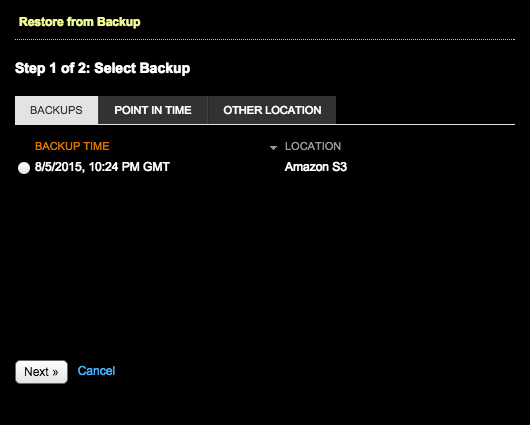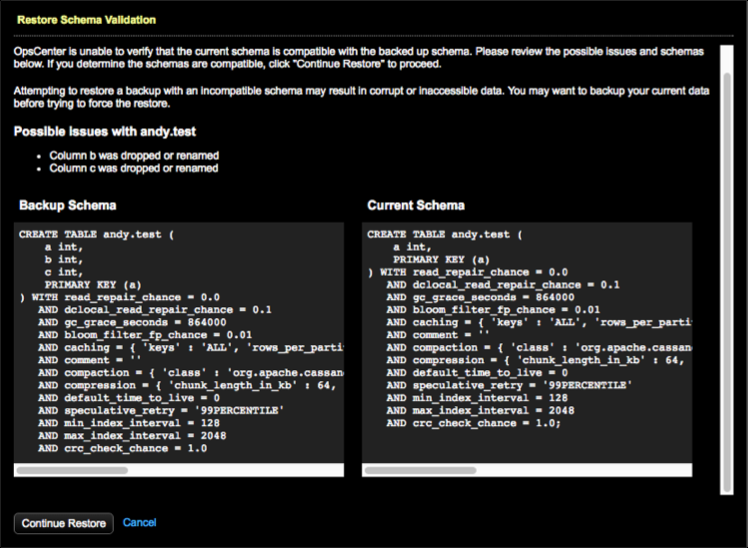Restoring from a backup
Restore data from a previously completed backup run from OpsCenter.
Restore data from any local or Amazon S3 backups that have been run by OpsCenter. You cannot use the OpsCenter Backup Service to restore from snapshots run with nodetool. You can pick any subset of tables that exist in the snapshot to restore.
Note: If the backup contains encrypted tables created prior to DataStax Enterprise 4.0.4
or 4.5.2, you will not be able to restore the snapshot. Due to a bug in Cassandra,
backups containing encrypted table data from versions prior to 4.0.4 and 4.5.2 do
not contain the necessary keys to restore the backup.
Prerequisites
- To restore an encrypted backup, the agent must be granted password-less
sudo access on the DataStax Enterprise nodes. This has already been
granted if you used OpsCenter to install the agents. If you are running the
agent as a different user than DataStax Enterprise and need to restore encrypted
tables, you must manually restore the
system_keytable. - The Restore feature of the Backup Service leverages the sstableloader utility, which currently requires enabling the thrift server on all nodes before restoring. Before restoring, ensure the thrift server is enabled on all nodes.
- When restoring tables that are Solr cores, if the table does not already exist, it will be automatically re-created as a CQL table. If you require this to be a thrift-based table, manually recreate the table prior to restoring. If you are restoring data from a thrift table that no longer exists, you are responsible for creating the table prior to restoring.
Important: The Backup Service requires control over the data and structure of its
destination locations. The AWS S3 bucket and the Local file system destinations must be
dedicated for use only by OpsCenter. Any additional directories or files in those
destinations can prevent the Backup Service from properly conducting a Backup or Restore
operation.
Procedure
Results
After the restore starts, the Restore Report dialog displays
detailed information about the progress and status of the restore. The Restore
Report dialog can be closed at any time without impacting the restore process.
Reopen the report by clicking on the In Progress restore in
the Activity tab. View the Restore Report for any completed
restore by clicking on the restore of interest in the Activity tab.
Note: If you are
restoring (essentially cloning) from an S3 backup and you close the Restore
Report dialog, you must reopen the Restore Report from the destination
cluster.

If there is insufficient disk space to restore the backup, the restore fails. See Monitoring sufficient disk space for restoring backups.



